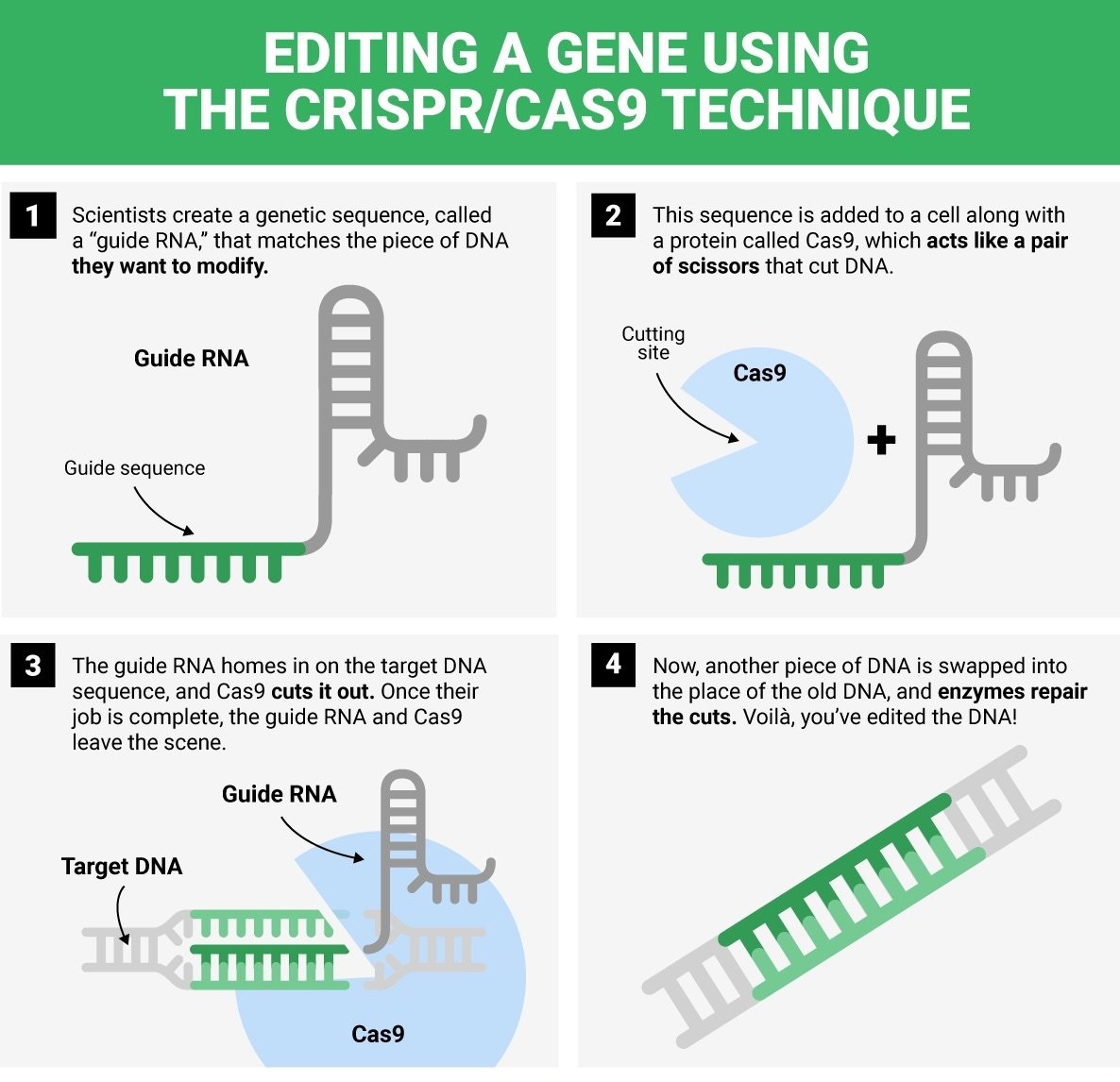Whole Gene Integration Into Human DNA: CRISPR's Potential And Challenges

Table of Contents
CRISPR-Cas9: The Tool for Whole Gene Integration
CRISPR-Cas9, a revolutionary gene editing tool, functions by utilizing a guide RNA molecule to target a specific DNA sequence. This guide RNA directs the Cas9 enzyme, a molecular scissor, to cut the DNA at the precise location. This targeted cut enables the insertion of a new gene – facilitating whole gene integration. Two primary approaches are employed: homology-directed repair (HDR), which uses a donor DNA template to guide precise gene insertion, and non-homologous end joining (NHEJ), a less precise method prone to insertions or deletions.
- Advantages of CRISPR-Cas9: Compared to older gene editing techniques, CRISPR-Cas9 offers unparalleled precision, efficiency, and relative ease of use, making it a powerful tool for whole gene integration.
- Limitations and Potential Off-Target Effects: While highly specific, CRISPR-Cas9 can occasionally cut at unintended locations (off-target effects), potentially causing harmful mutations. Ongoing research focuses on minimizing these off-target effects through improved guide RNA design and enhanced Cas9 variants.
- Ongoing Research: Scientists are constantly refining CRISPR-Cas9 technology, exploring modifications like base editing and prime editing to enhance accuracy and reduce off-target activity. This continuous improvement is critical for safe and effective whole gene integration.
Potential Applications of Whole Gene Integration
The therapeutic potential of whole gene integration is vast, particularly in treating genetic disorders caused by gene mutations or deletions.
- Treating Genetic Disorders: Diseases like cystic fibrosis (CF), sickle cell anemia, and muscular dystrophy, currently incurable, may be treatable through the precise insertion of functional genes using CRISPR-Cas9. Whole gene replacement offers the possibility of correcting the underlying genetic defect, leading to a functional cure.
- Gene Therapy Advancements: Current gene therapy strategies often rely on adding functional genes, but whole gene integration allows for a more complete and potentially more effective correction of the genetic defect.
- Beyond Disease Treatment: While the focus is primarily therapeutic, the technology's potential extends to areas like enhancing human capabilities (though ethically fraught) and developing disease-resistant crops through targeted genetic modifications. The implications of whole gene integration are far-reaching.
- Ethical Considerations: The power of whole gene integration necessitates careful ethical consideration, particularly regarding germline editing (modifications passed to future generations) and potential misuse of the technology.
Challenges and Safety Concerns of Whole Gene Integration
Despite its immense potential, whole gene integration faces considerable technical and safety challenges.
- Technical Challenges: Efficiently integrating large DNA sequences remains a major hurdle. The size of the gene to be integrated directly impacts the efficiency of the process.
- Off-Target Effects: As mentioned, off-target cuts can lead to unintended mutations, potentially causing adverse health effects. Strategies to minimize these effects include improved guide RNA design and the development of higher-fidelity Cas9 enzymes.
- Insertional Mutagenesis: The integration of the new gene into an incorrect location in the genome could disrupt the function of other genes, leading to insertional mutagenesis and potential harm.
- Immune Responses: The introduction of foreign DNA can trigger immune responses, potentially leading to inflammation or rejection of the gene therapy.
- Long-Term Consequences: The long-term effects of whole gene integration are largely unknown, requiring extensive preclinical studies and careful monitoring of patients in clinical trials.
- Regulatory Hurdles: Strict regulatory oversight is crucial to ensure the safe and responsible use of this powerful technology, considering the profound ethical considerations involved.
Future Directions and Research in Whole Gene Integration
The field of whole gene integration is rapidly evolving. Researchers are actively pursuing multiple avenues to enhance the safety and efficiency of this technology.
- Emerging Gene Editing Technologies: Beyond CRISPR-Cas9, other gene editing tools, such as base editors and prime editors, are being explored, offering potential improvements in precision and reducing off-target effects.
- Improved Delivery Systems: Developing effective and safe methods to deliver large genes into target cells is critical. Viral and non-viral delivery systems are under development.
- Artificial Intelligence and Machine Learning: AI and machine learning are being employed to optimize guide RNA design, predict off-target effects, and improve the efficiency of whole gene integration.
Conclusion:
CRISPR-Cas9 holds immense promise for whole gene integration, offering potential cures for debilitating genetic diseases. However, significant challenges related to safety and efficiency remain. Continued research and development, focusing on minimizing off-target effects, improving delivery systems, and addressing ethical concerns, are crucial for unlocking the full therapeutic potential of this groundbreaking technology. Further research and development in whole gene integration, along with responsible implementation, are essential for advancing gene therapy and improving human health. Continued investment and collaboration are paramount to overcome the remaining challenges and realize the transformative potential of this technology.

Featured Posts
-
 Kawasaki Z H2 Motor 197 Hp Yang Tak Masuk Indonesia
May 30, 2025
Kawasaki Z H2 Motor 197 Hp Yang Tak Masuk Indonesia
May 30, 2025 -
 Chinese Bridge Competition Amman Hosts Grand Finale 24th Edition
May 30, 2025
Chinese Bridge Competition Amman Hosts Grand Finale 24th Edition
May 30, 2025 -
 Tiga Jet Ski Premium Kawasaki Resmi Diluncurkan Kemewahan Di Atas Air
May 30, 2025
Tiga Jet Ski Premium Kawasaki Resmi Diluncurkan Kemewahan Di Atas Air
May 30, 2025 -
 Glastonbury Festival Iconic Rock Bands Return Hinges On Life Or Death
May 30, 2025
Glastonbury Festival Iconic Rock Bands Return Hinges On Life Or Death
May 30, 2025 -
 Edward Burke Jr The Hamptons Leading Dwi Defense Attorney
May 30, 2025
Edward Burke Jr The Hamptons Leading Dwi Defense Attorney
May 30, 2025
